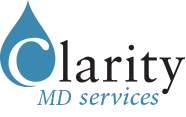There are four insurance companies offering disability insurance to physicians at the moment. They are Canada Life, Great-West Life (GWL), Manulife and RBC. Although the RBC plan is the most popular option for medical students due to its non medical underwriting requirement, some students wonder if they should consider other options given that they are healthy and should have no problem passing the medical. Furthermore, Great-West Life and Canada Life seem to have the option to pay out the benefits until you die while RBC would only pay until age 65.
Unfortunately, there is actually more to this pay-forever feature. Firstly, this option (called LAGS) requires extra premium. Secondly, the benefits would only pay beyond age 65 if you are disabled from Any Occupation. In other words, being disabled from practising medicine but able to do ANYTHING else will not qualify you for any benefits beyond age 65.
So, you may wonder what makes GWL a good alternative especially it costs about 20% more than RBC. Here are the two reasons that make GWL superior to the other disability plans in the market.
I. Strongest residual disability definition
Unlike full disability, residual disability claim (working on a reduced schedule) requires financial evidence to secure the benefits. The amount of benefits paid will depend on your income prior to disability as in the following example.
Prior income: $200,000
Income while on partial disability: $100,000
Benefits paid: 50% of the coverage amount due to 50% income loss
Obviously, it would be advantageous to have a very high prior income as that will yield a higher benefit amount. However, every company uses a different method to determine the prior income. RBC uses your best 2 of past 3 year’s income as a benchmark while GWL uses your best 2 of the past 5 years. Canada Life only uses your last year’s income as prior income, which is why we never recommend Canada Life to any physicians. In our past claims experience, GWL generally yields higher residual disability benefits.
II. Recovery benefits
As above, once you are on residual disability, your benefits will depend on your prior and current income. That said, RBC will continue to review your condition regularly to ensure that you are working on a reduced schedule because of your disability, and not because you choose to work part-time. As soon as your attending physician reports that you are able to return to work at full capacity, your benefits will cease. With GWL, once you are on residual disability, your benefits will only depend on your loss of income and NOT your condition. So, if you have fully recovered and choose to work part-time, you will continue to receive the benefits based on the percentage of loss of income.
The recovery benefits feature can be beneficial to physicians who own a private clinic (Plastic, Dermatology, OBGYN-fertility, ENT etc.). A private clinic operates like a business where you will lose significant “good will” and patients if you are out of business for an extended period of time. The income recovery period is generally longer than that of a practice that relies solely on government remuneration. It may take weeks if not months to rebuild the brand and the revenue. In private clinics, patients do not wait for you to return to work, they will just go to another provider. With the recovery benefits, you will continue to receive disability benefits based on your loss of income even after you have fully recovered. This will alleviate the pressure of having to build up the income right away right following your disability.
In our opinion, RBC is still the most logical option for students regardless of their specialty. I should also point out that applying to other disability insurance can affect your eligibility for the RBC plan because it does not accept anyone who has been declined by another insurance company.









